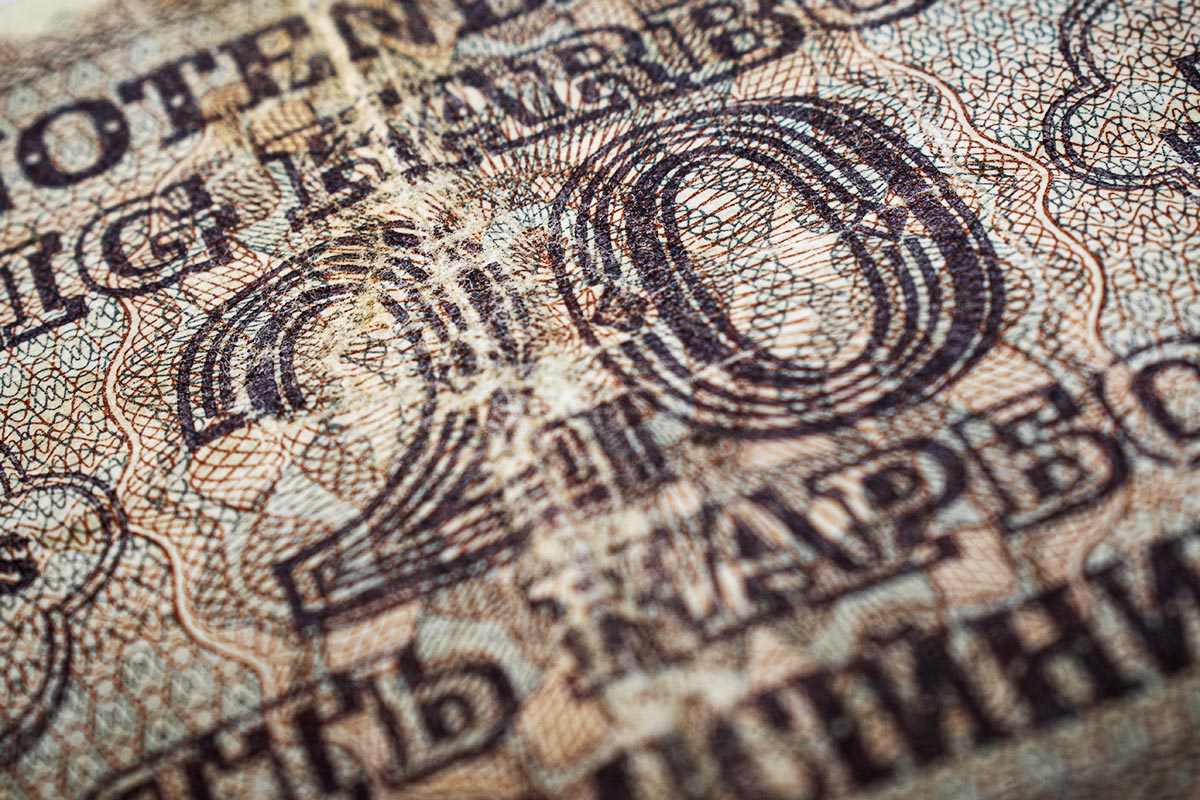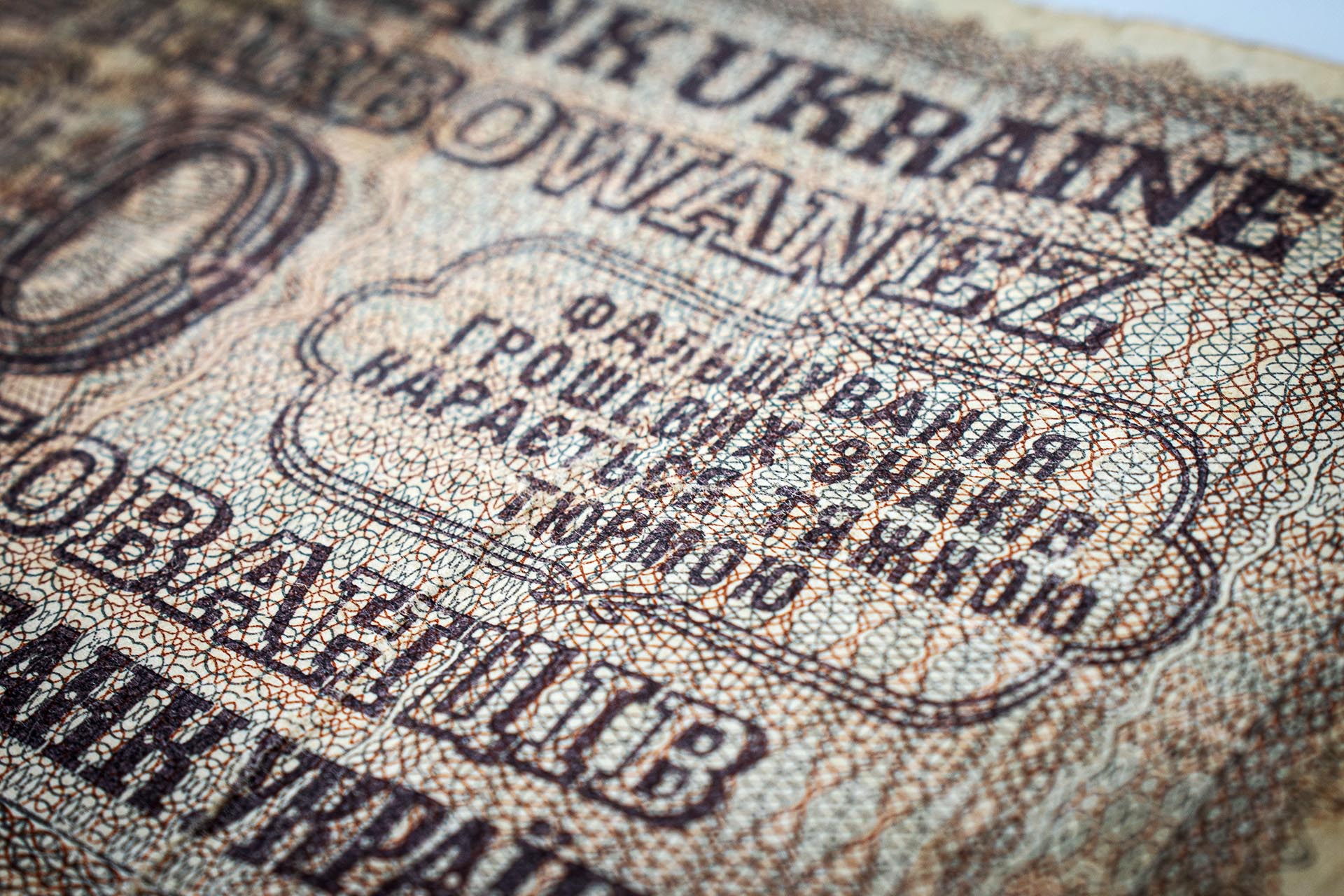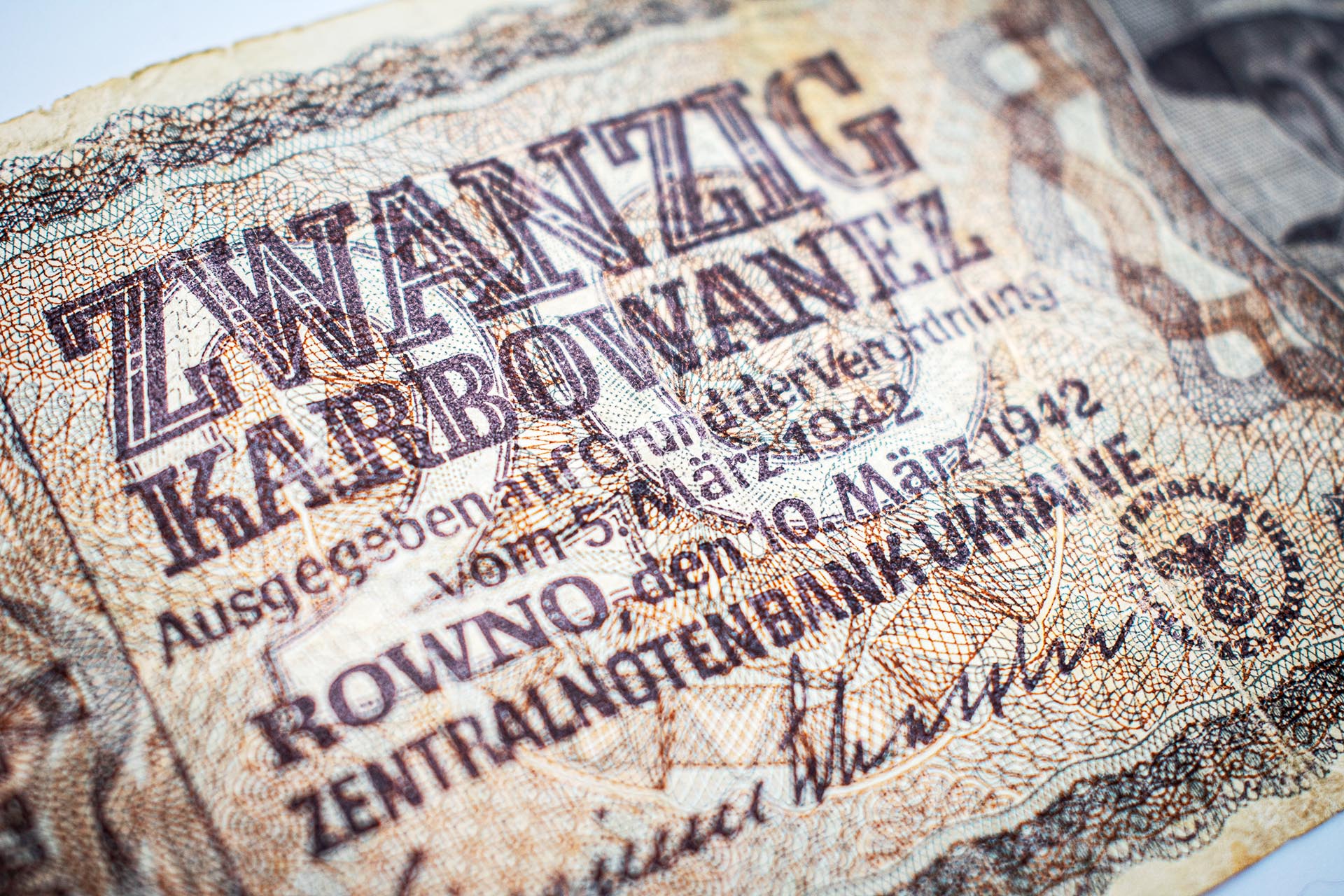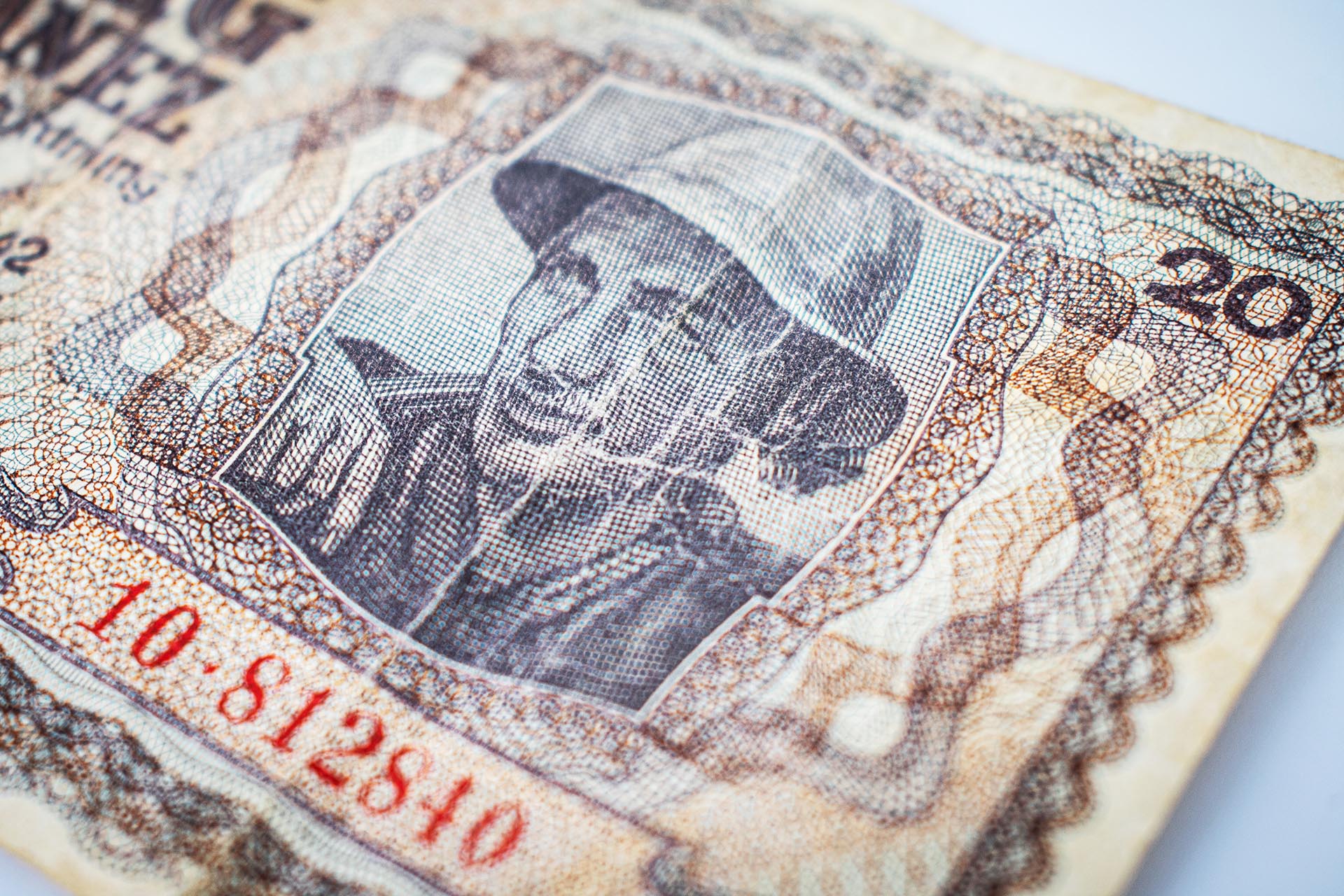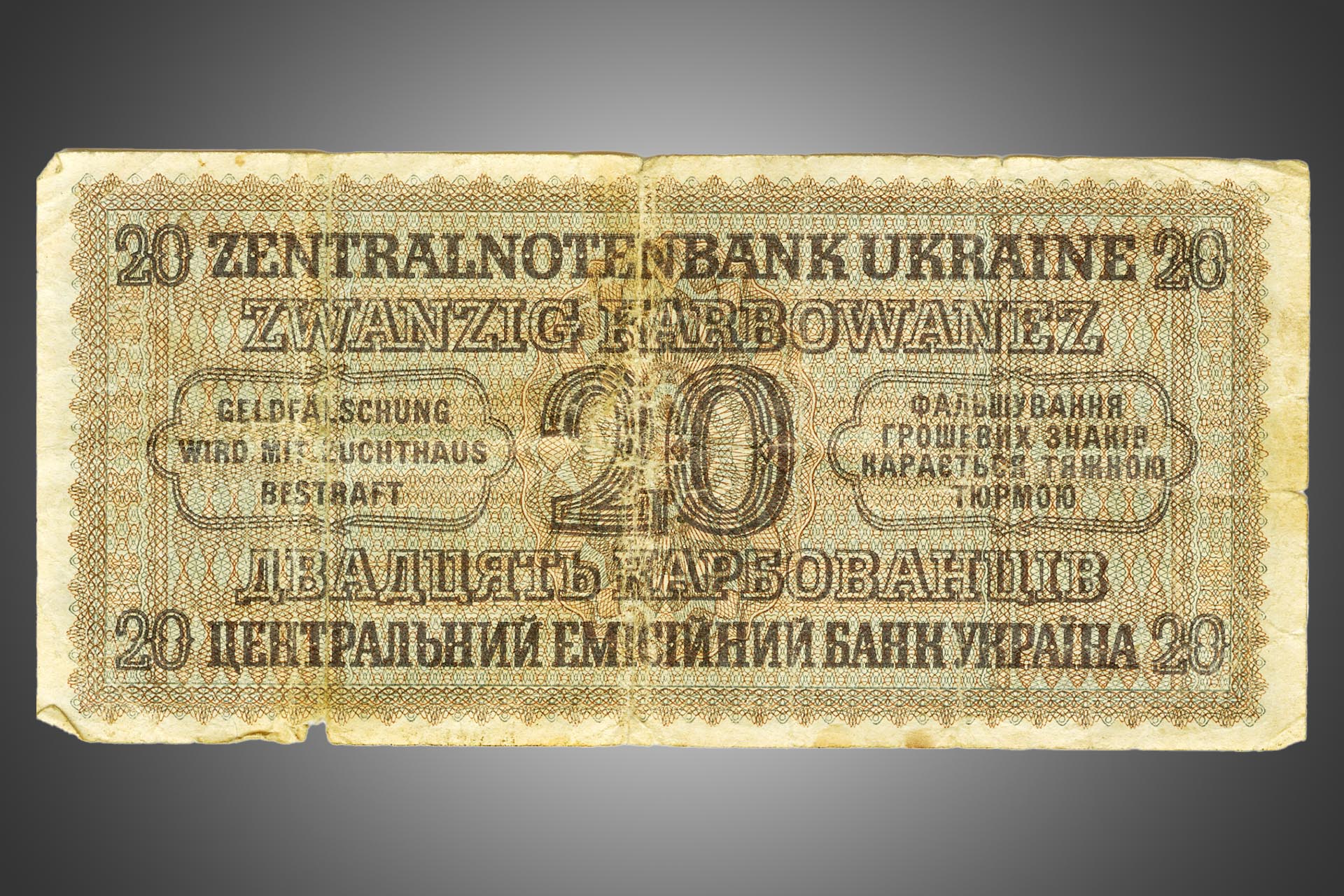During the years of occupation, the city of Rivne became not only the center of the Reichskommissariat “Ukraine” but also began to issue its own currency. Initially, the German Reichsmark was introduced as the currency, followed by the so-called karbovanets. According to the decree of March 5, 1942, on March 10, 1942, the German administration, in conjunction with the Central Issuing Bank of Ukraine, released "occupation money" for circulation – nine banknotes with denominations of 1, 2, 5, 10, 20, 50, 100, 200, and 500 karbovanets.
The Central Issuing Bank of Ukraine was established in Rivne in the spring of 1942 and had branches in regional centers. The issuance of karbovanets began on July 1, 1942. The official exchange rate was set at a ratio of 1 karbovanets = 1 ruble, and 10 karbovanets = 1 Reichsmark. The karbovanets were printed in Germany, with designs based on the theme of a "happy Ukrainian population."
Starting from July 25, 1942, the population was asked to surrender all Soviet banknotes above 5 karbovanets. The karbovanets remained in circulation until October 1944. After the expulsion of the Nazis from the territory of Ukraine., the karbovanets were annulled.
The banknote is rectangular in shape. On the obverse, against an ornamental background, the denomination is depicted both numerically and textuall – “20” and “ZWANZIG KARBOWANEZ” (twenty karbovanets). Below this is the text “Ausgegeben auf Grund der Verordnung vom 5. März 1942” (issued based on the decree of March 5, 1942) and “ROWNO, den 10. März 1942 ZENTRALNOTENBANK UKRAINE” (Rivne, March 10, 1942).
The reverse features inscriptions in both German and Ukrainian: “ZENTRALNOTENBANK UKRAINE ZWANZIG KARBOWANEZ” ("Central Issuing Bank of Ukraine. Twenty Karbovanets") and “GELDFÄLSCHUNG WIRD MIT ZUCHTHAUS BESTRAFT” ("Counterfeiting currency is punishable by severe imprisonment"). In the center is the numerical denomination “20”.
